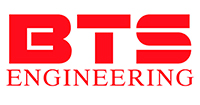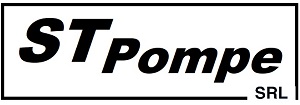2025 — Prom-nasos.com.ua
October 20, 2025
Centrifugal pumps BB
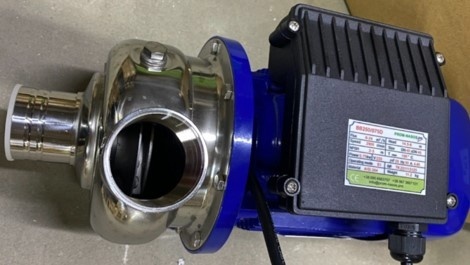
Purpose
The main task of this pump is to transfer liquids with a stable flow and without pulsations. The pump is perfectly suited for operation in both industrial and municipal systems. In particular, it is used for:
supplying water in water supply systems;
circulating liquids in cooling and heating systems;
supporting technological processes in food, chemical, and light industry enterprises;
irrigation in agriculture.
Application area
The BB centrifugal pump is installed in boiler houses and heating units, production workshops, agricultural complexes, centralized and local water supply systems, the food industry (for example, for washing vegetables and fruits on production lines), for supplying cooling water to equipment, for transferring process solutions (such as saline or sugar solutions), in chemical and pharmaceutical industries, for pumping glycol-water solutions (in cooling systems), for feeding reagents in production processes, and for circulating neutral or slightly acidic liquids.
Advantages of the model BB250/075D
Reliability – the simple design minimizes the risk of breakdowns.
High performance – the pump can deliver large volumes of liquid at stable pressure.
Energy efficiency – the optimized motor operation helps save electricity.
Versatility – suitable for various applications, from municipal services to industrial facilities.
Easy maintenance – free access to working parts simplifies servicing and repair.
Thanks to its ability to handle various types of liquids — from drinking water to technical solutions — the BB250/075D pump is a convenient solution for industrial operators, farmers, and municipal utilities alike.
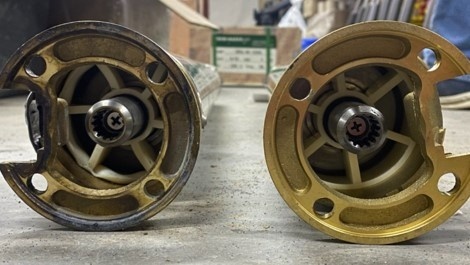
Submersible pumps of the 4SD 6/23-2.2 380V series are reliable and efficient units used for supplying clean water from medium and deep wells. However, even with proper operation, over time there may arise a need to replace the pump section. This is a normal process of wear of the impellers and hydraulic components, as the pump operates daily under load in a water environment.
Signs that the pump section has failed:
significant drop in performance (the water flow becomes weaker);
the pump takes longer to reach operating mode;
unusual noises or vibrations are heard during operation;
the water becomes cloudy due to excessive friction between parts.
If the motor is in good condition during diagnostics and the issue lies only in the hydraulics, replacing the pump section is the most economical and correct solution.
How the replacement process works:
Removing the pump from the well.
Disconnecting the electric motor. Before disassembly, always make sure there is no voltage.
Removing the worn pump section. The old impellers and diffusers are replaced with new factory-made components.
Installing the new pump section and connecting it to the motor.
Inspection and test run. The pump is started in a water tank before being lowered into the well.
Proper operation after replacement
Always check the water quality. If the well contains a lot of sand, it is recommended to install a filter or case the lower section.
Do not allow “dry running.” Operating without water will damage the mechanical seal .
Monitor the power supply. The voltage should remain stable at 380 V ±5%. In case of phase imbalance, the motor may overheat and damage the hydraulic system.
Perform regular maintenance. Once a year, it is advisable to check the cable, couplings, suspension condition, and automation performance.
Replacing the pump section in the 4SD 6/23-2.2 380V model allows you to fully restore the pump’s performance without purchasing new equipment. Proper installation and adherence to operating conditions ensure stable operation of the unit for many years.
September 10, 2025
Lobe pumps for viscous products
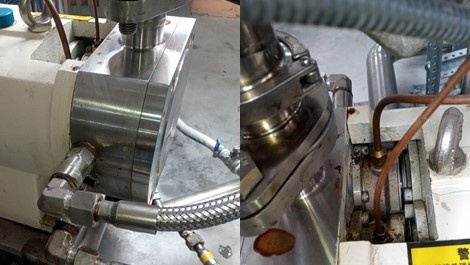
Lobe pumps (rotary, vane, flap) with a steam jacket are a type of pumping equipment specially designed for products that tend to solidify or crystallize quickly when the temperature drops.
The pump design incorporates the “steam jacket” method, which includes two types: the pump body or the pump cover. Steam or hot water can be supplied to the body or cover of the pump to maintain a constant temperature of the working chamber. This effectively prevents seal damage caused by material solidification during start-up.
The steam jacket can be widely used for products whose viscosity is highly affected by temperature. These pumps can be used in the production of sugar, chocolate, pharmaceuticals, butter, and more.
Lobe pump for pumping caramel at 140°C
Applications:
The rotary food pump can be used to transport all kinds of materials with medium and high viscosity as well as high solid content.
Lobe pumps are widely used in the production of sugar, chocolate, dairy products, various syrups, concentrated fruit juice, jelly, yogurt, honey, ice cream, cake fillings, cereal porridge, soy protein, meat fillings, seasonings, tomato paste, caramel, bean paste, and other products.
September 5, 2025
Replacement of Wilo MHI series pumps with Medana series pumps
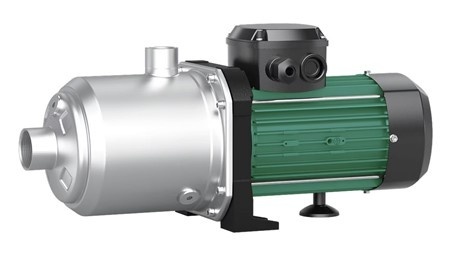
A well-known German manufacturer of pumping equipment, Wilo (Dortmund, Germany), whose official representative is our company, has discontinued the popular in Ukraine horizontal multistage pumps of the MHI series due to the release of new, more energy-efficient pumps.
Pump of the MHI series
Despite their external appearance (the pumps look almost identical).
Pump of the Medana series
The Medana series pumps are equipped with a more energy-efficient electric motor and an improved hydraulic section.
As before, by purchasing pumps from this manufacturer, you get high quality at an affordable price.
Pumps of this series are characterized by high hydraulic efficiency, reliability, and maintainability.
September 2, 2025
Filters for electroplating
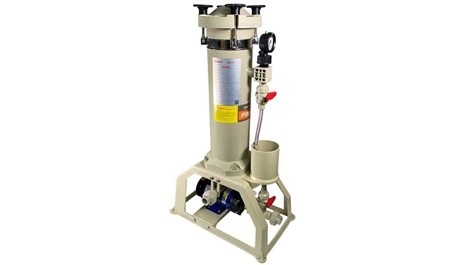
Galvanization, that is, coating one type of metal (usually steel) with a thin layer of another metal (nickel, zinc, chrome, etc.) in order to protect it from corrosion or as a decorative coating.
The basis of galvanization is the electrolytic process, when a part or workpiece is immersed in a bath with electrolyte. During production, the electrolyte becomes contaminated with mechanical impurities and precipitates formed as a result of the electrolytic process.
Since the electrolyte becomes contaminated, there is a need for its purification. The electrolyte contains acids, metals, and salts of relatively high value, so its reuse is economically justified.
The simplest and quite effective way of purifying the electrolyte is the use of mechanical filters.
In essence, this process is very similar to water purification, with the difference that the materials used to manufacture the pump and the filtration unit must be chemically resistant.
Our company offers both separate chemically resistant plastic pumps (polypropylene, PVDF, PVC) as well as ready-made filtration units .
The advantage of a filtration unit, at a relatively low cost, is the presence of all necessary elements to implement the purification process almost immediately, straight out of the box.
The filter housing is equipped with Slim 20-inch filter elements. These elements are available to order with different pore sizes — 5-10-25-50-100 µm.
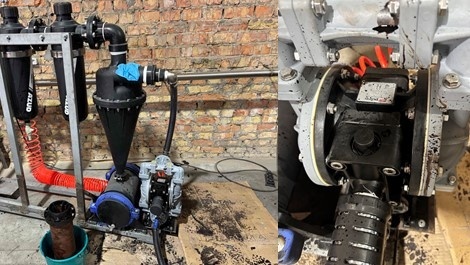
DP series diaphragm pumps from the Turkish manufacturer Diapump are pumps driven by compressed air. The compressed air enters the air distribution block, which alternately directs pressure into the air chambers, causing the diaphragm to perform reciprocating movements, changing the volume of the working (product) chamber and enabling the pumping process.
These pumps, made of plastic materials – PP, PVDF – can handle quite aggressive liquids such as sulfuric, nitric, hydrochloric acids, acid mixtures, galvanic solutions, etc. Additionally, the pump design allows for pumping liquids with a certain content of solid particles depending on the pump model.
The working product pressure of the pump is considered to be one unit lower than the air pressure supplied. The maximum air pressure is 7 bar, so the product can be pumped at about 6 bar. However, the technically correct approach is to refer to the pump’s performance chart provided in the catalog for each model.
On the chart, the red lines represent air pressure, while the black curves represent air consumption. At the intersection of these lines, one can determine the resulting product pressure and flow rate depending on the inlet air pressure and consumption.
It’s no surprise that these pump features encourage engineers and technologists to use them for filtration in various technological processes.
However, when using a diaphragm pump for filtration, one must carefully calculate the pressure and take into account the pump’s operating principle.
First – the diaphragm pump produces a pulsating flow, and without special dampers , the filter will be exposed to minor hydraulic shocks with each diaphragm movement, which can significantly shorten the filter’s service life.
Second – as the filter becomes clogged, the backpressure in the product supply line increases, which may lead to the complete stop of the pump.
Conclusion – the use of diaphragm pumps in filtration systems is possible and effective, provided proper selection and calculation of the equipment, and when other pump types are difficult or impossible to use. Otherwise, preference should be given to centrifugal chemical pumps, magnetic drive pumps , or stainless steel centrifugal pumps.
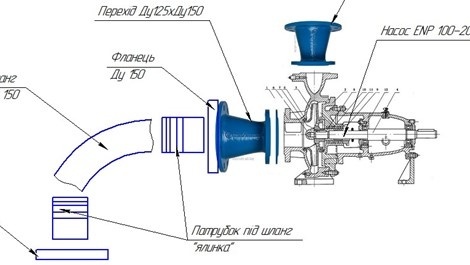
The main parameters of almost any pump are undoubtedly the flow rate (in cubic meters per hour, liters per minute, gallons per minute, etc.) and the pressure it generates (or vacuum, if it's a vacuum pump).
Of course, the manufacturer provides the pump’s technical specifications and guarantees that the pump can deliver the stated performance. These parameters are listed in catalogs, technical brochures, and also marked on the nameplate of the specific pump.
In addition to hydraulic data (maximum flow rate, maximum pressure or nominal values), the nameplate also includes the electric motor power and its characteristics.
However, the connection diameters, i.e., the inlet and outlet sizes to which the pump is connected in the system (marked “Inlet” and “Outlet” in English), are often overlooked.
At first glance, it seems simple – connect pipes that match the pump’s inlet and outlet diameters. But this seemingly logical assumption is actually incorrect and may lead to various issues during the operation of irrigation, circulation, or water supply systems.
It is essential to understand that the diameters of pipes connected to the pump must be determined through hydraulic calculation. This is the only correct way to select pipeline diameters. When replacing an old pump, if the new one has equal or better parameters, it usually works fine. But for a pump in a new system, hydraulic calculations must be done.
One must also remember that a pump is a dynamic machine, and the fact that the discharge port is, for example, DN50 does not mean the discharge pipe must be DN50 as well.
It’s also important to note that the parameters provided by the manufacturer in the documentation are based on specific test conditions. For example, for centrifugal overhung pumps, the nameplate data are based on the following:
water temperature of 20˚C;
suction depth of 1.5 m;
liquid density of 1000 kg/m³.
In real-world conditions, these parameters often differ. Suction pipe diameter is especially important for centrifugal pumps. To avoid air suction, cavitation, and performance loss, the suction pipe must always be larger than the pump’s suction port.
An example of pump and suction pipe diameter ratios as given in the catalog of a European manufacturer:
As shown in the table, the suction line diameter should be larger to ensure proper fluid flow into the pump’s working chamber. This is especially important when water is drawn from a depth of 4 meters or more. As suction depth increases, the pump’s flow-pressure characteristics change (i.e., reduced flow and pressure).
The image below shows a typical setup of a drip irrigation pump that draws water from a river, below the pump installation level.
The height difference between the water surface and the pump axis is small – only 1.5–2 m – but the suction pipe length is about 5 m. Therefore, a pump with a DN125 suction port should be connected with a larger pipe – at least DN150.
July 11, 2025
Flow control of a positive displacement pump
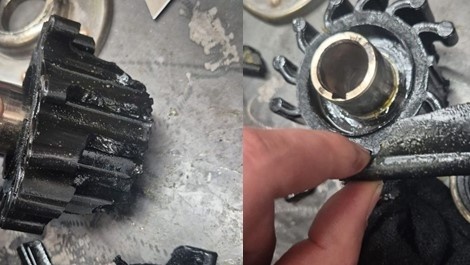
Positive displacement pumps are devices that operate based on the principle of changing the volume of a working chamber. This can occur due to an eccentrically mounted impeller (in an impeller pump ), rotation of gears , piston movement, membrane movement , change in hose volume ( peristaltic pump ), etc.
Given the operating principle of such a pump, it can be concluded that regulating its performance with shut-off valves (by closing valves on the discharge or suction line) may be harmful and dangerous both to the pump and the system in which it operates.
Unlike dynamic pumps, these pumps do not generate pressure but are capable of overcoming certain pressure, which may reach dozens or even hundreds of megapascals (MPa).
This means that if, for example, a gear pump is operating in a circulation system, the pressure gauge will actually show the resistance of the piping system (pipes, bends, filters).
Pressure gauge in a transformer cooling system. A gear pump ENP 1010 is operating with a maximum pressure of 15 bar. The pressure gauge shows 0.2 bar.
Below in the photo – the result of closing the valve on the discharge pipe in the same system.
As a result of closing the valve, the sealing rubber was damaged.
Another example – an attempt to regulate flow with a valve in an impeller pump AlphaDynamic .
As a result – damage to the impeller and the need for repair.
Conclusion – the operation of a positive displacement pump should be regulated using a bypass line or frequency inverter. IT IS STRICTLY FORBIDDEN to close shut-off valves at the pump inlet or outlet. If a bypass line is not installed in the system, safety valves must be used.
July 3, 2025
Peculiarities of wet rotor pumps operation
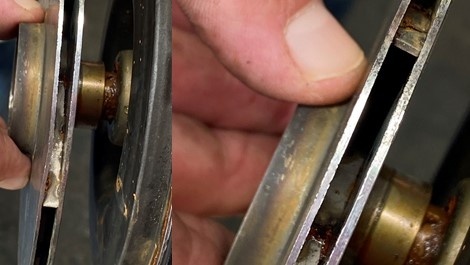
Wet rotor pumps are a large group of pumps widely used in heating and cooling systems.
Thanks to their silent operation, low energy consumption, and absence of mechanical seals, they occupy a significant niche both in industrial systems and residential heating installations.
Currently, you can purchase basic options like single-speed pumps without any control, as well as “smart” electronic pumps with pressure and flow control and multiple operating modes.
Despite all the advantages listed above, these pumps have one significant drawback — the quality of the water or heat carrier they work with. Regardless of the level of smart electronics involved, the core element of this type of pump equipment remains the mechanical part — the "wet rotor".
Since the rotor is washed by the pumped medium, its quality must be adequate — clean, and free from mechanical impurities (scale, sand, rust flakes, etc.).
The photo below shows a pump that was sent to us for servicing due to rotor jamming after just 1.5 months of operation.
The impeller and the gap between the rotor and stator were clogged with rust flakes, which caused the rotor to seize.
Conclusion — when using pumps of this type, it is crucial to ensure proper water treatment. With clean water, the pump will last well beyond the warranty period.
Otherwise, you should consider pump systems that are less sensitive to water quality — such as inline dry rotor pumps equipped with a standard asynchronous motor and mechanical seal.
June 17, 2025
Pumping carbon dioxide with a multi-stage pump

Carbon dioxide (CO₂) – a colorless gas (under normal conditions), easily soluble in water.
In addition to the widely known fact that it is an important element of the photosynthesis process, this substance is widely used in the food, pharmaceutical, agricultural, and mechanical engineering industries, among others.
In the technological process of carbon dioxide production, transportation means are essential, namely a pump unit. Carbon dioxide is in a liquid state at low temperature and high pressure.
In the photo below – a vertical multistage pump installed in the carbon dioxide production line. Frost (frozen water vapor contained in the air) is observed on the pump surface and shut-off valve .
The feature of this type of pumps is the ability to generate high pressure due to the number of impellers located on a single shaft one after another. This design allows achieving significant pressures (from 3 to 25 bar).
The disadvantage of vertical configuration is the danger of forming steam-air "plugs" in the upper part of the pump due to high liquid velocity and, consequently, local boiling of carbon dioxide.
It is in this part of the pump that the mechanical seal is located. This element prevents liquid leakage from the working chamber and should be cooled by the pumped liquid, but since a steam-air zone is formed where the seal operates without liquid – "dry running", the service life of the mechanical seal is significantly reduced.
In the case of "dry running", rapid wear of friction pairs and melting of rubber rings occurs.
To eliminate this problem, a bypass tube can be used. This pump piping element allows directing vapors to the suction line, thereby preventing the formation of a steam-air "pocket" in the mechanical seal area.
















